A striking image shared by the Royal Armoured Corps captures a Eurofighter Typhoon flying low over a soldier during NATO exercises in Estonia.
The photograph shows off the close collaboration between air and ground forces as part of NATO’s Enhanced Forward Presence (EFP) initiative, designed to deter aggression and protect its eastern flank.
The NATO Battlegroup in Estonia is a multinational unit led by the British Army, stationed in Estonia as part of NATO’s EFP. This forward-deployed force was established in 2016 following Russia’s annexation of Crimea, with the aim of deterring potential aggression in Northern, Central, and Eastern Europe.
EFP battlegroups are deployed in Estonia, Latvia, Lithuania, Poland, Slovakia, Hungary, Romania, and Bulgaria to bolster regional security and ensure that any attack on a NATO member would invoke Article 5, the principle of collective defence.
Although the forces are not large enough to threaten Russia directly, their presence sends a clear message: any aggression would involve confronting NATO soldiers from multiple member states, raising the stakes for potential adversaries.
The Role of Forward Air Controllers
A key element of these exercises involves Forward Air Controllers (FACs), also known as Joint Terminal Attack Controllers (JTACs) within NATO. FACs are highly trained specialists who provide critical coordination between ground forces and air assets during close air support (CAS) missions.
They are responsible for:
- Identifying and communicating targets to attack aircraft.
- Minimising risks of civilian casualties and friendly fire incidents.
- Authorising each step of an air engagement.
In NATO Battlegroup Estonia, soldiers, including those from the Royal Dragoon Guards are being trained to call in fast air missions.
The training exercises in Estonia also involve close coordination with Baltic Air Policing, NATO’s mission to safeguard the airspace over the Baltic states.
The Royal Armoured Corps described the collaboration, tweeting:
“NATO Battlegroup Estonia not only has trained Joint Terminal Attack Controllers but soldiers at all levels learning to call in fast air missions… They’re working hand-in-hand with Baltic Air Policing on multiple joint training.”
Fast Air…
NATO Battlegroup Estonia not only has trained Joint Terminal Attack Controllers but soldiers at all levels learning to call in fast air missions including troops from @ArmdCavRDG.
They’re working hand-in-hand with Baltic Air Policing on multiple joint training pic.twitter.com/CUozdWMzcC— Royal Armoured Corps (@RoyalArmdCorps) January 9, 2025



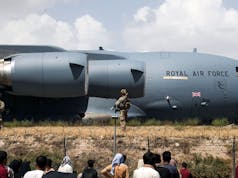
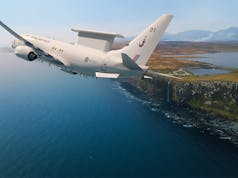
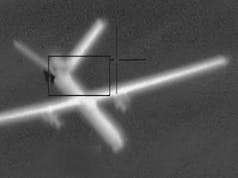
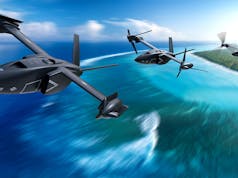
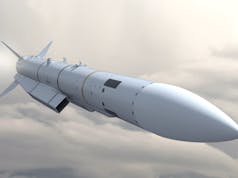

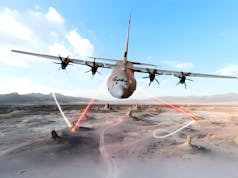




Top marks to the Photographer 📷 👍
RDG are a good outfit, versatile proud regiment
How good is Typhoon at delivering CAS in support of the army?
Typhoon is as good as any other fast jet, perhaps with Brimstone it adds an extra dimension as the warhead has quite a low blast radius, so can be used in more constrained areas. But like all fast jets, they do have a problem with persistence over a target. A lot of that is dependent on the threat environment mind. I’d imagine for Ukraine, persistence over a target is the last thing on a pilot’s mind. Afghan was ideal for CAS, as there was next to no ground to air threat. Though it didn’t stop a large number of helicopters being shot down from small arms and RPGs.
I did the JTAC training in 2010, then putting it into use in Afghan right up to 2015 with US assistance, as my last tour was helping Afghan National Army training. Things like Predator and other drones were ok, as they could spend hours over a operational area. But they suffered from a small payload and generally only carried a limited number of weapon types. For me the two best CAS aircraft were primarily the A10 followed by Apache. The A10 as it could spend time in the area, whilst it also carried a large mixed payload, plus the gun was a fight winner in its own right! Whilst the Apache, just by its very presence caused the “enemy” to disengage and Foxtrot Oscar. The French were pretty impressive with their low level fly-bys. As one memory comes to mind of a pilot in his Mirage 2000 who went supersonic at about 250ft over the target area, then pulled up vertically. Must have hit some serious g doing that! The effect was pretty cool, as it created a huge following dust storm that dumped on the area.
Just to let everyone know, the job of a JTAC is not just limited to controlling air strikes. But also includes coordinating ground fire support missions from artillery, mortar sections and including indirect MG to beat an area. On my course we also got to play with a T23 and its 4.5″ gun.
I always likened the role of JTAC to that of a sniper, but with much bigger effects. The additional blast radius and shrapnel was also something that had to be taken in consideration before coordinating the attack. Legal ramifications for making the wrong decision were always there in the back of your mind. Which was fine when you had a stand-off distance and could positively identify the target and the surrounds. But there were times when you had to call in a strike that was stupidly danger close and take the responsibility if anything went wrong. For me, I can sleep at nights knowing I made the right decisions and the target was properly prosecuted. I do know a few, who made the call, but got it slightly wrong ending in tragic circumstances, even though the target was prosecuted! The JTAC role was not always black and white.
Thanks Davey, I appreciate your experience. Harriers were popular in Afghan for CAS of course before being replaced there by Tornadoes, but that is history now. Typhoon has a single Mauser 27mm (and only 150 rounds) rather than the twin Aden 30mm that Harrier had. So is the Typhoon gun capability enough for CAS? Also, I suspect many CAS targets might not merit a very expensive smart missile, so should CAS aircraft have the option of lower priced ordnance, maybe unguided rockets?